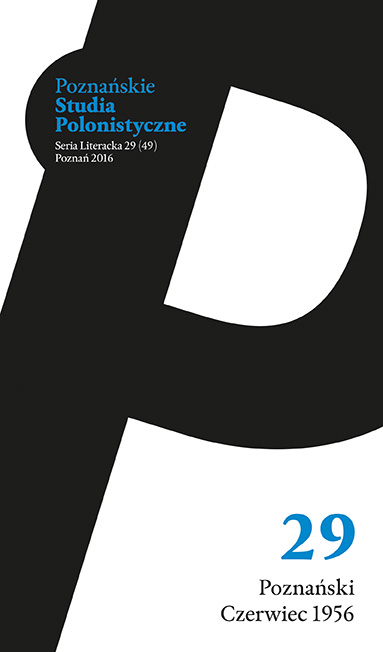Poznański Czerwiec w czasie powieściowym
Poznań 1956 protests in novelistic time
Author(s): Ewa WiegandtSubject(s): Local History / Microhistory, Recent History (1900 till today), Polish Literature
Published by: Wydawnictwo Poznańskie Studia Polonistyczne
Keywords: novel; time; censorship; strike theme; uprising theme;
Summary/Abstract: The article begins with the statement based on current research, that Poznań 1956 protests are little represented in literature. Subsequently, the article analyses the construction of character and temporal composition of several novels about the Poznań 1956 protests. The novels are arranged chronologically and divided into two parts: censored ones and those published without official approval and censorship. The first group includes Jeszcze miłość by Bogusław Kogut, Odyseja, odyseja by Marian Grześczak and Wióry by Krystyna Kofta. The second group includes Krótki żywot bohatera pozytywnego by Piotr Guzy, Ciemnia by Bogusława Latawiec, Krew by Andrzej Górny, and Węzeł by Józef Ratajczak. The first group, true to the course of history, represent the rise of the political thaw and the party regaining control over situation. The second group, because of the time of writing, cover a longer time and tend to universalize the theme. In novelistic representations of Poznań 1956 protests there are two strains: uprising-themed and strike-themed. It turns out that the latter is the least present, because most novelistic characters are party-members and intelligentsia, whereas workers and ordinary people are relegated to the background. Plotlines are arranged biographically, not chronologically, because the novels are narrated as internal monologues with retrospective memories. The novels written by authors from Poznań, or related to Poznań, focus on the provintial character of the city, as opposed to the centralist influence of Warsaw.
Journal: Poznańskie Studia Polonistyczne. Seria Literacka
- Issue Year: 2016
- Issue No: 29
- Page Range: 73-89
- Page Count: 17
- Language: Polish

